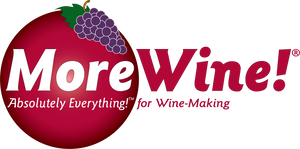Wine Storage Temperature: Best Practices for Aging Homemade Wine
- 5 min reading time
You've successfully guided your wine through fermentation, pressing, and the initial stages of aging. Now comes the most patient part of the process: cellaring. During this quiet time, your wine is undergoing a slow, complex evolution, developing the nuanced aromas and silky texture that only time can provide. However, this delicate transformation is entirely dependent on one critical factor: storage temperature.
Storing your wine at the correct temperature is not just a suggestion; it is the single most important thing you can do to ensure it ages gracefully and reaches its full potential. The wrong temperature can accelerate aging, create off-flavors, or even ruin the wine completely. This guide will explain the ideal temperature range and why it's so crucial for your homemade wine.
Protect your investment. Shop our Thermometers and Temperature Control solutions.
For a complete overview of the science of wine aging, download our Complete 70-Page Guide to Red Winemaking.
The Dangers of Storing Wine Too Warm (> 65°F)
Storing wine in a warm environment is a recipe for premature aging and potential disaster. Heat acts as an accelerant for all the chemical reactions happening in the bottle.
- Cooked Flavors: Instead of developing complex notes, the wine's fresh fruit flavors will "cook," turning jammy and stewed.
- Accelerated Aging: The wine will evolve too quickly, losing its freshness and structure long before it should.
- Imbalanced Extraction: If you are aging with oak, warm temperatures cause the wine to extract tannin and flavor from the wood too rapidly.
- Increased Spoilage Risk: Higher temperatures speed up the growth of any potential spoilage microbes that may be present.
The Problem with Storing Wine Too Cold (< 50°F)
While less damaging than heat, storing wine too cold is also not ideal. Cold temperatures significantly slow down the aging process.
- Arrested Development: The complex polymerization reactions that create nuanced secondary and tertiary aromas will slow to a crawl.
- Ties Up Your Cellar: A wine that should have been ready in two years might take four or five to mature, tying up your bottles and your storage space.
The "Goldilocks Zone": 55-60°F (13-15°C)
The universally agreed-upon ideal temperature range for aging all types of wine—red, white, and rosé—is between 55°F and 60°F.
This temperature is the perfect compromise. It is:
- Cool enough to prevent the "cooked" flavors and rapid evolution caused by heat.
- Warm enough to allow the wine's complex chemical reactions to proceed at a slow, steady, and graceful pace.
Why Temperature Stability is Even More Important
Even more critical than a perfect 57°F is a consistent temperature. Large, frequent temperature swings are a wine's worst enemy.
When wine warms up, it expands. When it cools down, it contracts. In a sealed bottle, this constant expansion and contraction can compromise the seal of the cork, allowing tiny amounts of wine to be pushed out and air to be sucked back in. This repeated exposure to oxygen will quickly oxidize and spoil the wine. A cool, dark place with a stable temperature is paramount.
Practical Storage Solutions for Home Winemakers
- The Best Option: A Wine Fridge or Cooler. These are specifically designed to hold a perfect and stable temperature.
- A Good Option: A Cool, Dark Basement. An underground basement is often naturally in the ideal temperature range.
- A Decent Option: An Interior Closet. A closet in the coolest part of your house that doesn't share an external wall can also work.
Avoid storing your wine in a kitchen, garage, or attic, as these places experience the most extreme and frequent temperature changes. By finding a cool, stable home for your bottles, you ensure that the wine you've worked so hard on will be protected as it evolves into a mature, complex, and rewarding final product.
Ready to create the perfect aging environment? Explore our Wine Cellar and Temperature Control equipment.
